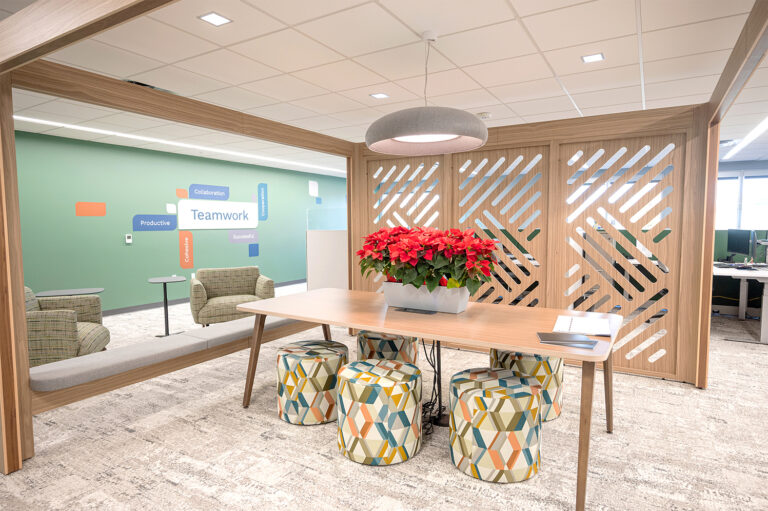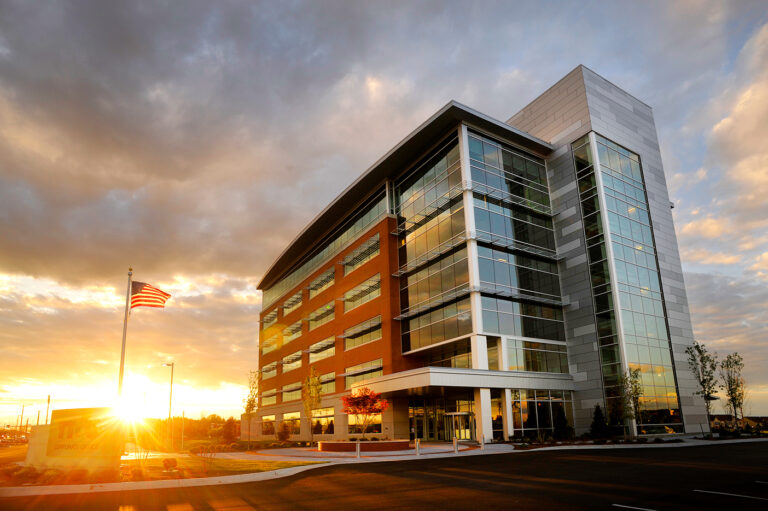The only constant in life and the marketplace is change. Change demands decisions from leadership, especially in the context of a growing organization. When faced with challenges of growth, such as occupancy and physical space needs, the response can often be reactive. Quick, inexpensive fixes are adopted, acting as temporary solutions to much larger, more complex problems.
One temporary fix for growing organizations is to divide their headquarters across multiple buildings. Sometimes mergers and acquisitions result in central operations being split among more than one facility. In most cases, this represents a temporary fix due to the challenges it presents.
Split-Operations: dividing a headquarters across multiple physical locations, usually in the same city. This is a common practice when an organization outgrows its building with no room to expand easily.
Dealing with the challenges of growth is not easy, and demands a careful, considerate approach. If you are attempting to plan a split-operations solution, you must consider the following concerns.

Maintain a Strong and Consistent Culture
Think of culture as the personality of your organization. A positive culture creates an atmosphere that fosters employees that are happy to come to work and clear about their roles and purpose. Split headquarters present heavy obstacles to maintaining a healthy and consistent company culture among your teams.
Since 2020, we have experienced a worldwide change in how teams collaborate from separate spaces. Virtual solutions for collaboration have been popularized and adopted en masse as organizations respond to the harsh realities of the COVID-19 pandemic. But widespread adoption of virtual communication as a primary mode of collaboration has also helped to highlight its weaknesses.
When organizations divide their central operations, it can be difficult to inspire the same strength and quality of culture among separate offices. Collaboration, communication, and strong leadership are the key ingredients to developing a strong work culture. Duplicating these across multiple locations can present tremendous personnel and communication challenges.
Loss of personal, face-to-face interaction among team members is simply irreplaceable and can only be mitigated. The fact is that regular casual, in-person interactions help build rapport, trust, and a common understanding among your employees. As a result, a divided team’s team cohesion can diminish.
Encourage Collaboration
Didn’t we already mention this? Yes. And we won’t stop beating this drum. Strong and efficient organizations thrive on collaboration. This is truer today than ever before.
High-value employees expect a corporate culture that encourages productive collaboration. The ancient wisdom that ‘two heads are better than one’ is all about perspective and accountability. People that work collaboratively expect ideas and solutions from one another and are eager to share their own. The results bear this out—collaboration increases productivity.
The trend toward collaborative workspaces is reflected in modern design. Flexible and multifunctional meeting spaces are created through renovation or built to facilitate many kinds of collaborative work.
Common areas are built to increase the number of spontaneous interactions that naturally take place. For example, TTCU set out to consolidate their operations from multiple buildings into one unified headquarters. At the core of their building design was an expansive, communal staircase meant to create spontaneous encounters among members of various departments.
The staircase was wide enough to accommodate impromptu conversations without blocking foot traffic. Several compact meeting rooms were strategically placed near staircase entrances to allow these interactions to continue in earnest.

Create a Flagship Experience
The right way to approach headquarters planning is no longer a formulaic increase in offices and cubicles. Companies are using their headquarters as a way to put a stake in the ground and establish a representative flagship space for their brand.
Leadership sees the connection between a powerful headquarters experience and the talent market. To attract and retain high-value team members, you must embody the values people want to be a part of. Google and Facebook are obvious examples of this principle, but it’s also true in smaller organizations.
Despite how it may seem, an effective ‘headquarters experience’ is not just an everything bagel of fun or trendy amenities. Your unique brand and culture should inform the environment. For instance, teams that are research and data-driven may have different needs than those that are focused on continual communication or creativity.
How Split Operations May Work for You
If your only option is to divide your headquarters, there are a few ways you can mitigate the obstacles in front of you.
- If you have the real estate, consider establishing a strategically designed campus where separate buildings are connected by convenient paths and outdoor collaboration spaces. Employ centrally located amenities such as fitness centers to increase opportunities for interpersonal communication.
- Carefully consider which departments need to reside together in the same building. Departmental adjacencies should already be a concern, regardless of your headquarters situation.
- Create virtual channels of communication between offices. Utilize technologies like an intranet and collaborative solutions such as Microsoft Teams or Google Meet.
- Bring teams from different offices together with activities that promote culture. Sponsored 5Ks for charity, recreational athletic teams, and regular benefit events can help build connections among groups who don’t usually work together.
- Maintain consistent design elements and amenities across all buildings to help your teams avoid developing “us-versus-them” mentalities.
- Be deliberate and consistent about how you communicate your mission, vision, and goals at each of your offices. When people feel like everyone is working toward the same objectives, they experience a stronger connection with other departments. Use design elements like identical company history feature pieces or branded vision walls.